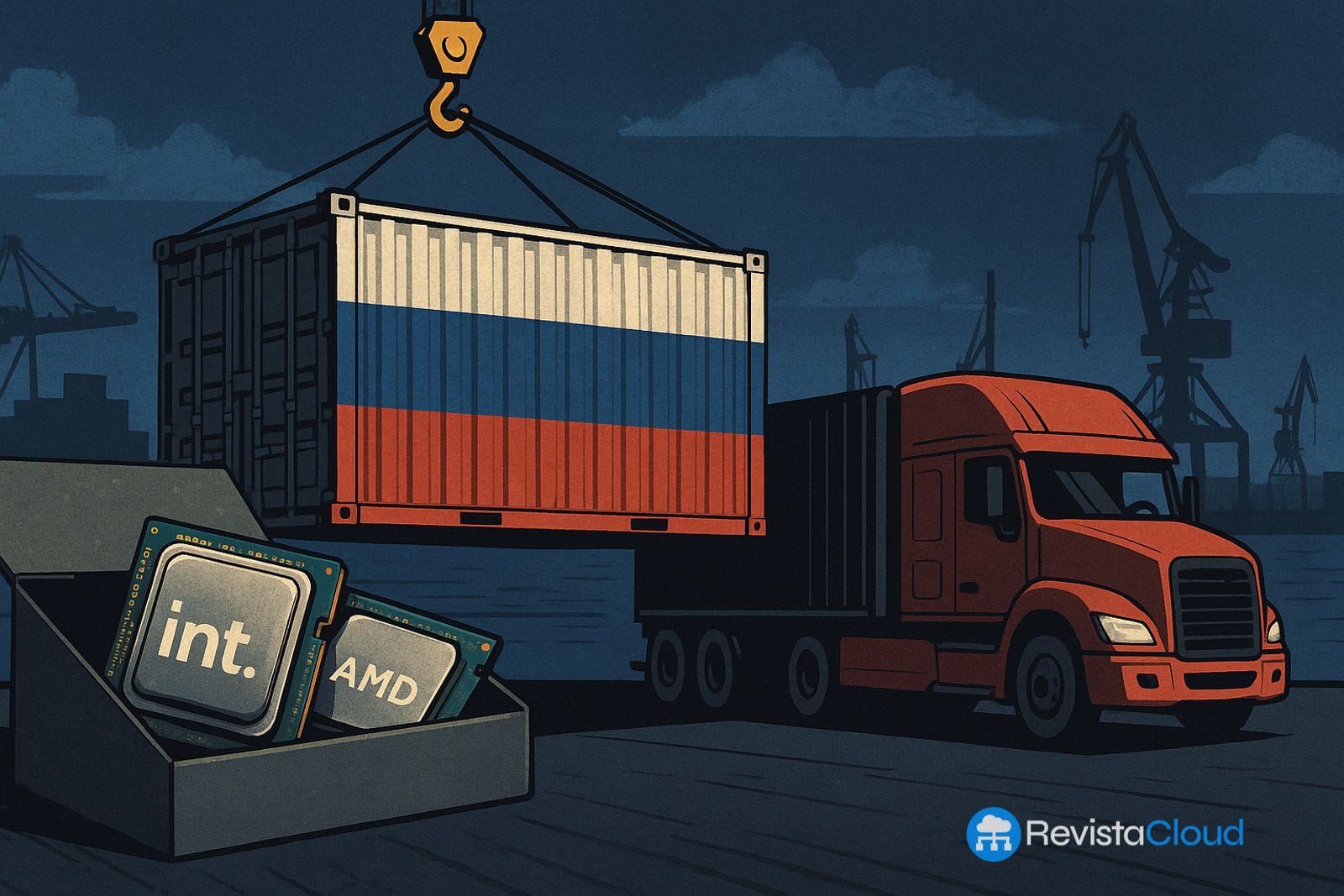While official statistics report a drastic decline, Russian companies claim the opposite: CPUs keep arriving with no signs of shortage
Russia seems to have found the formula to bypass the technological sanctions imposed by the United States and Europe. According to official data from Russian customs, the import of American processors plummeted in 2024: a 95% decrease for Intel and an 81% decrease for AMD. However, this figure sharply contrasts with the statements of local tech companies, which claim to have increased their purchases by up to 30% compared to the previous year.
The contradiction between the official narrative and the real situation in the market has generated growing uncertainty. While the Federal Customs Service (FTS) reports a significant drop in registrations, Russian manufacturers assert they are receiving more chips than ever, with no supply issues reported. “There is no shortage,” executives from companies like Rikor or the Lotus Group state. In fact, some indicate that over 120,000 units were imported just in 2024, exceeding the previous year’s levels by a third.
Obscured Traffic and Camouflaged Labels
The key to this phenomenon seems to lie in the opacity of the import process. In many cases, processors are not declared as such. They are categorized under broader labels or simply not specified in the container contents. This strategy allows for bypassing international trade controls and facilitating access to microchips, even from Western-aligned countries.
Hong Kong, India, and especially Malaysia— a country that has already been highlighted for increasing its tech exports by 3,400%— have become the main transit points. From there, CPUs arrive in Russia re-labeled, without visible brands, or even mixed with other hardware components, making their traceability difficult.
Affordable Price Increases with No Impact on Demand
Despite the complex logistics and additional costs of these operations, prices have not surged as one might expect. Companies report that increases have been moderate, between 10% and 12%, a figure deemed manageable compared to the alternative of halting production. Forecasts for 2025 show no signs of slowdown: to supply the domestic server market alone, up to 300,000 new processors are expected to arrive.
Additionally, domestic production of computer equipment in Russia reached 181 billion rubles in 2024, according to Rosstat data, reinforcing the idea of a recovery of the local tech industry.
The Geopolitical Game Behind the Chips
The situation has called into question the real effectiveness of U.S. sanctions. While Washington intensifies its rhetoric against Moscow, processors continue to arrive in practice. U.S. companies are not directly involved, but the control over secondary channels— where Asian intermediaries operate— seems limited or even deliberately lax.
The report from Help Net Security also warns that some of the imported CPUs end up being used in sensitive sectors, including critical infrastructure, artificial intelligence, and defense, where the supply of advanced chips is essential to maintain competitiveness against the West.
Conclusion: Sanctions in Question
The Russian case shows that sanctions, without a global system of traceability and cooperation among customs, can be easily circumvented. Far from isolating the country technologically, the pressure has incentivized the creation of a parallel supply network that continues to flow robustly.
In the meantime, Russia continues to import more chips than before the conflict in Ukraine, at barely higher prices and with an increasingly sophisticated supply chain. The tension between geopolitics and technology, rather than resolving, is intensifying.
via: el chapuzas informatico and kommersant

